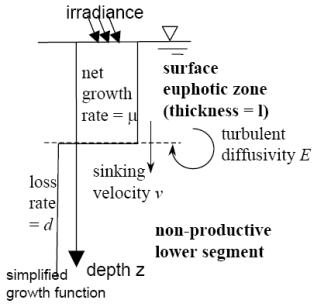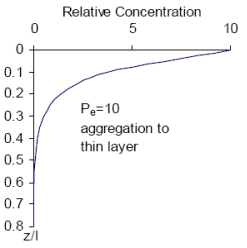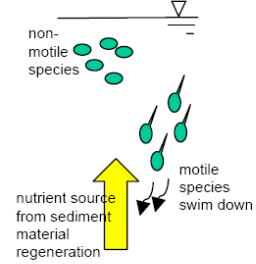Dynamics of Algal Blooms and Red Tides in Coastal Waters:
Monitoring, Modelling and Prediction
¡@
A Vertical Stability Theory and Model for Red Tide Forecasting (Poster)
¡@
Introduction
¡@
A simple vertical stability theory has been devised to determine the conditions necessary for red tide formation based on considerations on algal growth, loss and depth regulation in a water column. It is shown that red tides occur only under certain stable water column conditions and with sufficient nutrient and light supply. Furthermore, in very tranquil waters, motile species are more competitive in utilizing bottom nutrient. A criterion for predicting whether a red tide would be caused by motile or non-motile species is established.
¡@
Theory
¡@
1. Non-motile species
|
|
For non-motile species, blooms are caused by rapid growth of the species. An environment favouring the growth of non-motile species is therefore considered. ¡@ Considering the effect of turbulent diffusion, sinking and growth/mortality on the algal concentration
¡@ Criterion for red tides caused by non-motile species is given by
|
| ¡@ | ¡@ |
|
2. Motile species |
¡@ |
|
|
For motile species, blooms are mainly caused
by aggregation instead of growth. An environment favouring the
depth regulation of motile species is therefore considered.
Examinating the concentration profile, the
condition for
|
| ¡@ | ¡@ |
|
3. Competition threshold |
¡@ |
|
|
When the water body becomes very calm, the motile species become more competitive in utilising the bottom nutrient through downward migration
|
| ¡@ | ¡@ |
|
4. Triggering Nutrient Level |
¡@ |
|
By considering the efficiency of the algae in
utilising the sediment nutrient source, the red tide triggering nutrient level is shown to be around 100-200£gg/L for nitrogen |
|
¡@
Flow diagram of the red tide prediction model
¡@
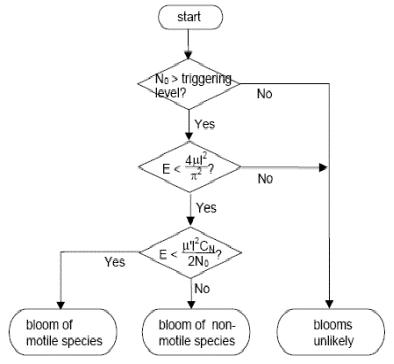
¡@
Verification
The model
has been validated against 13 observed red tide occurrences at the two
field monitoring stations in Kat O and Lamma Island (2000-2003). The
model has also been verified using independent data from Yung Shue Au,
Tolo Harbour. The theory predicts the triggering factors for red tides
in Hong Kong, and helps explain the occurrence of spring dinoflagellate
blooms in the northeastern waters and summer diatom blooms in the
southern waters.

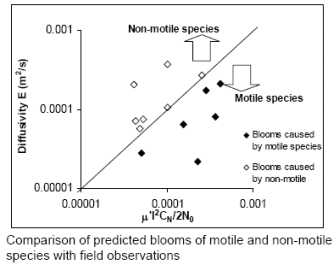
¡@
¡@
